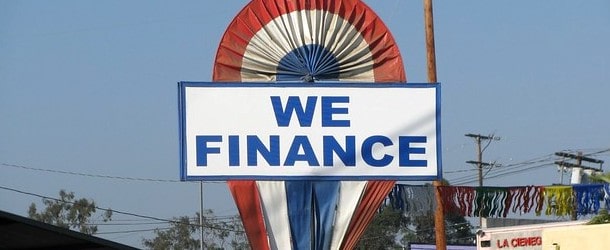
For the sake of simplicity, a “credit card finance charge” is the interest credit card issuers charge in exchange for lending consumers money.
A Fancy Way of Saying Interest
- The phrase “finance charge” is just another way of saying interest
- It is what you are charged for financing your purchases with a credit card
- But they’re only due if you don’t pay your credit card in full each month
- If you can’t pay in full, consider transferring the balance to a 0% APR credit card that doesn’t accrue interest during the promotional period
Credit card issuers provide cardholders with a grace period, which is generally a few weeks, in which you can pay off your credit card balance in full and avoid finance charges entirely.
So you are able to carry a balance each month, and pay if off without incurring any of these charges.
But if you do not pay off your credit card balance in full each month, you’ll be subject to finance charges (assuming the APR is greater than zero).
The amount of finance charges will depend on both the accounting method and the APR tied to the credit card.
As a rule of thumb, the higher the APR and/or balance, the higher the finance charges.
Most credit card issuers use average daily balance to calculate your finance charges.
Let’s look at a finance charge example:
Credit card balance: $5,000
Credit card APR: 19.99%
Accounting method: Average daily balance
Monthly finance charges: $66
Though your credit card balance is currently $5,000, let’s assume the average balance during the billing cycle (30 days) was only $4,000.
First, we figure out your daily periodic rate (DPR) by dividing your 19.99% APR by 365. We come up with 0.000548.
Then we multiply the DPR by the $4,000 average balance by the number of days in the billing cycle (30).
0.000548 x 4000 x 30 = $65.72
We come up with roughly $66, which would be your finance charges, or interest owed, for the month.
So if you were making $100 payments each month on your credit card, the bulk of it would go toward paying interest. Clearly this isn’t optimal.
There are other accounting methods for calculating credit card finance charges, but they all pretty much result in the same amount of interest owed.
And I don’t want to over complicate this subject, so I’m keeping it simple.
Credit Card Finance Charges Can Add Up Fast
- While credit card finance charges often appear nominal
- Say less than $100 each month
- Much of your monthly payment will simply go toward paying those off
- Meaning the outstanding debt barely gets touched, and never goes away if you continue to make new purchases
Finance charges are often overlooked because they’re typically only a small amount of money each month, and are usually mixed in with all your other monthly charges.
This is how the credit card debt trap works. It’s essentially designed to go undetected, much to the bewilderment of cardholders.
But assuming you were paying $66 a month in finance charges, you’d be paying roughly $800 annually (using simple math). That’s certainly expensive.
To avoid all those finance charges, you could easily execute a 12-month 0% APR balance transfer and pay NO finance charges for a year.
You’d save $800 over the first year and probably pay down your credit card balance in the process because every dollar of every payment would go toward the balance, not a mix of interest and your principal balance.
This is the main benefit of a credit card balance transfer. You pay down your debt quicker, avoid unnecessary interest charges, and escape the credit card debt trap once and for all.
Keep in mind that there are some balance transfer drawbacks, including potential credit score dings and balance transfer fees, which vary among card issuers.
But the value of credit card balance transfers is pretty obvious, especially if you’re currently carrying high-APR credit card balances.
The next logical question: Is a balance transfer a good idea?